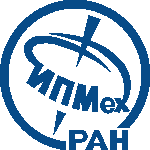
|
ИСТИНА |
Войти в систему Регистрация |
ИПМех РАН |
||
Стратегия поиска кротовых нор методами наблюдательной астрономиидоклад на конференции
- Авторы: Моисеев Ю.А., Сажина О.С.
- Всероссийская с международным участием Конференция : Всероссийская астрономическая конференция ВАК-2024 "Современная астрономия: от ранней Вселенной до экзопланет и чёрных дыр"
- Даты проведения конференции: 25-31 августа 2024
- Дата доклада: 26 августа 2024
- Тип доклада: Устный
- Докладчик: Моисеев Ю.А.
- Место проведения: САО РАН (п. Нижний Архыз Карачаево-Черкесской республики), Россия
-
Аннотация доклада:
We present a promising strategy for wormhole (WH) search using astronomical observations. By identifying a net effect of anomalous gravitational acceleration one can make an assumption about a hidden WH nature of a black hole (BH). We provide an upper estimate of this effect for several stars in known BH systems such as S2 and S62 orbiting around Sgr A*; along with modeling a synthetic system consisting of a traversable WH, a star on our side and a perturbing object on the other side of a WH. We also consider recently discovered objects from GAIA catalogue data – GAIA BH1, BH2 and BH3. We show that in the traversable WH model a perturbing object (star) located on the other side of the WH throat is capable of causing a significant anomalous acceleration of the object (star) on the observer’s side. We show that this effect prevails over the main competing effects such as disturbance from surrounding stars and the dark matter halo. The estimated magnitude of the anomalous acceleration varies from 10−4 to 10−2 cm/sec2, which corresponds to the current accuracy of acceleration measurement and in the future will make it possible to estimate the desired effect more precisely.
- Добавил в систему: Сажина Ольга Сергеевна